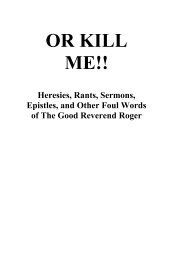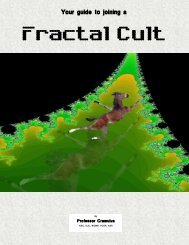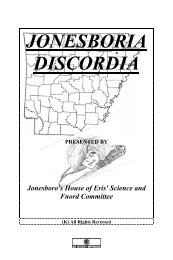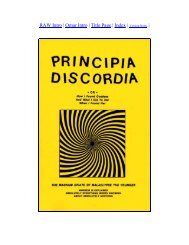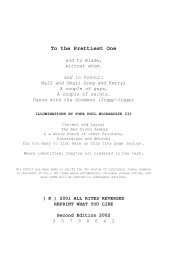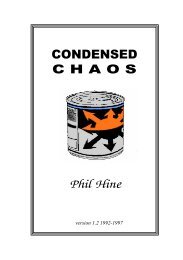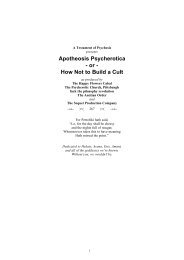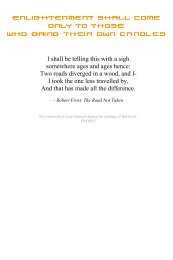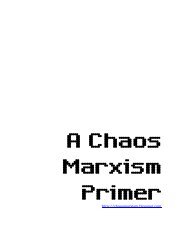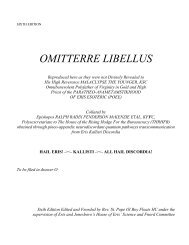Coincidance - Principia Discordia
Coincidance - Principia Discordia
Coincidance - Principia Discordia
Create successful ePaper yourself
Turn your PDF publications into a flip-book with our unique Google optimized e-Paper software.
100 COINCIDANCE<br />
by using special mathematics, and they have also discovered that an level<br />
is necessary to complete description of existence. To the Copenhagen school<br />
of quantum theory, is the multiple-reality of an atomic "particle" before<br />
we measure it and constrain it to one value. To the "hidden variable"<br />
theorists like Bohm, who deny that the act of measurement can magically<br />
transform a multiple reality to a single reality, is the hidden variable (they<br />
write it q) which constrains particles even when we aren't measuring them.<br />
To the quantum logic school of von Neumann, is the indeterminate<br />
function between Aristotelian true and false, the "maybe" in which<br />
quantum systems spend most of their time when we are not constraining<br />
them by experimental meddling. To Heisenberg, is the multiple truefalse-maybe<br />
forward-and-backward-in-time condition of potentia, which only<br />
becomes "reality" after our participation as experimentalists. Finally, in the<br />
Everett-Wheeler-Graham, or EWC, model, is every possible state that a<br />
"particle" or a "universe" can get itself into, all of which are considered<br />
equally "real," not just mathematically but physically, even though we only<br />
participate in one "reality" at a tiine.<br />
It is evident that these conflicting interpretations of quantum experiments,<br />
despite differences in technical philosophical niceties, all agree that ordinary<br />
everyday "reality" is only an aspect of a more complex function of multiple<br />
realities. If we ask why this quantum ontology agrees so conveniently with<br />
the teachings of Buddhism and Taoism, and why both physics and Eastern<br />
mysticism agree with Finnegans Wake, the only answer seems to be that the<br />
deep structure of matter, experimentally investigated, contains the same<br />
paradoxes as the deep study of mind, when experimentally investigated by<br />
the techniques of meditation and Altered States of Consciousness. In the<br />
depths, we do not find One Mind and One Reality, as Theists and<br />
Materialists both imagine, but something so different from day-time<br />
concepts that it can only be categorized in contradictions—No Mind<br />
(Taoism) and Many Realities (EWC model) or mathematical fictions that<br />
only become "real" when we interact with them (Copenhagen/Heisenberg<br />
views) or the three-valued von Neumann logic (True/False/Maybe) which<br />
resolves all Zen riddles and Sufi puzzles if you apply it to them.<br />
Before the reader cries (as Byron did of Wordsworth) "I wish he would<br />
explain his explanation," let us look concretely at some of the hologrammic<br />
prose of Finnegans Wake and see how the systems of andapply<br />
to it. We try the first sentence:<br />
riverrun, past Eve and Adam's, from swerve of shore to bend of bay,<br />
brings us by a commodius vicus of recirculation back to Howth Castle and<br />
Environs.<br />
On the level of<br />
or daily Ego consciousness, the dreamer is mingling



